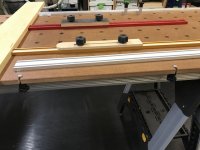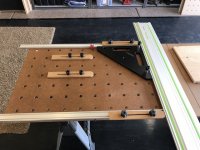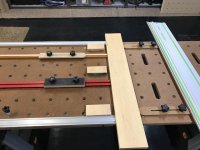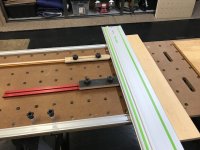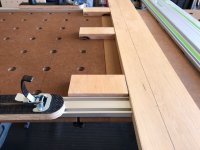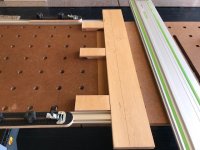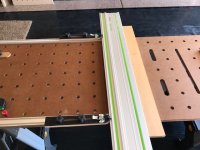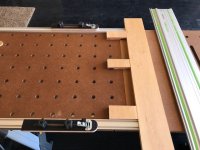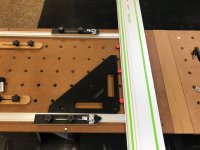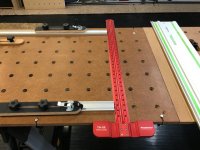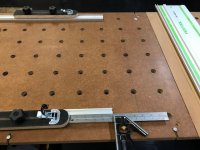Curt said:Pretty genius! Sort of what I was thinking about but my thoughts trended to 2 pairs of tracks each pair connected at the sides but sliding to act as the stops - outer tracks anchored by dogs which also act as rail stops. Consider your idea stolen. Thank you very much!
Sounds like your idea is similar to the fence setup I use. I slotted the edge of my MFT top so I could easily attach and square the Woodpeckers t-track I use for my fence, but you could also use rail dogs. By placing a sliding stop or block on top of the track essentially you have a thin-rip guide. Use the track as the stop for the material being cut and a few pieces of scrap material as a spacer to make the guide rail sit flat. I like the WP track, but Incra track would work also. Really simple.

